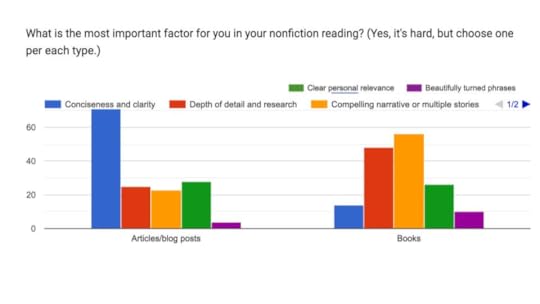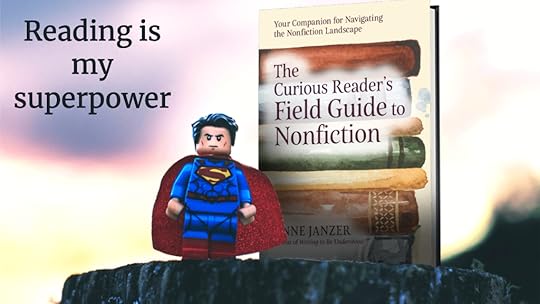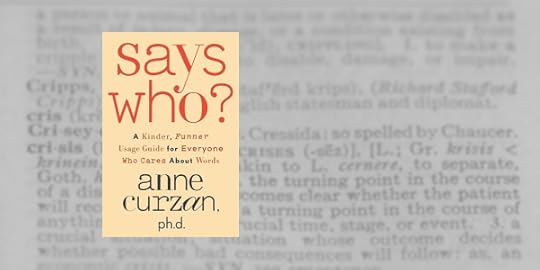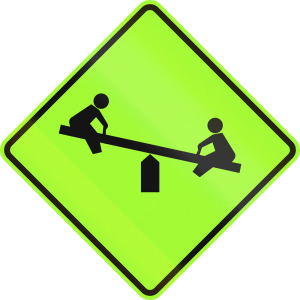Anne H. Janzer's Blog, page 3
December 17, 2024
To finish or not to finish?

Do you have any unfinished writing projects kicking around? The partial draft of an essay you’ve started, a book proposal in the works, or an unfinished novel?
Of course you do! We all do. But is does one weigh on your mind? If so, take a moment to examine your response to it.
Is it keeping you from working on a new project? (I have to finish this first.)Does it make you feel like less of a writer? (I don’t have the discipline to finish it, or I’m behind on my writing goals!)Unfinished projects can hold us back. We may feel guilty about them, or decide to invest unknown time and effort to finish them, while putting off the work that really makes our hearts sing.
False starts, half-written pieces, and scattered notebooks are the messy and necessary detritus of a creative life. Wisdom lies in knowing which of those projects to carry through to completion.
If you feel constrained by incomplete projects, or face months of clean-up before you start the real work of your writing, this short guide may help you weigh your options.
How to choose the keepersStart by identifying any unfinished projects that are tugging on you—something that you are not actively working on, or that you keep pulling up without making real progress. Choose any project that makes you feel uncomfortable, guilty, or inhibited.
Got one? Okay, let’s figure out your options. Consider it carefully and decide which of these buckets the project falls into:
Finish soonSet aside for the future Save as fodder for future projectsLet it goHow do you know which bucket the project belongs in? Let’s look at each.
Projects worth finishingIs this project worth your time and energy right now? That’s the big question—and always one worth asking.
Don’t get me wrong—I am a big fan of finishing and sharing your work. That’s an essential part of the creative process. If you never publish, then your writing finishes its journey to another person’s mind. (I wrote about the importance of shipping recently here.)
At the same time, we learn and grow in the process of writing, and may outgrow our past efforts. Don’t let the sunk cost fallacy — that commitment to finish because you’ve already worked on something — keep you on a path that no longer serves you. Checking an item off a list isn’t a big enough payoff.
If you don’t immediately think, “Yes, I want to finish this now,” you might examine why you’re pausing. Maybe life is too busy. Perhaps the project feels scary, or you’re not happy about the direction it’s taking you. Here are a few questions to help you examine your the project’s potential value.
How much work will it take to finish? A week? A month? A year?
If you love the project but don’t foresee having the time, consider down-cycling it. Turn it into something smaller that you can finish soon. Perhaps that aborted book becomes a short story or a blog post. That blog post becomes a social media post. You can always return to it later as the grander project, and will have learned something in the interim. (Many great nonfiction books start from essays.)
How will this project serve you?
Does it help you tune your skills or build your audience? Is it the kind of writing you want to do? Is it teaching you something? Perhaps it pays well; that’s a benefit, too. Make sure you understand your why.
How will this piece help others?
Will it make a difference in the world? The author George Saunders asks himself, “When, George, are you at your most powerful?” For him, the answer is writing fiction. You might ask the same question of yourself.
How does it make you feel?
How does writing this project make you feel? Powerful (a la George Saunders)? Joyful? Inspired? Or bored?
If it’s a clear win, chart your plan for finishing the project. Get help if you need to—an accountability group, a coach, a friend. If the project doesn’t have an absolutely green light, see if it fits in one of the other buckets.
Projects to save for laterIf you don’t have the time or resources to work on it now, save it for later. You may return as a stronger writer and wiser person.
Create a special folder or file for Future Projects, and carefully place it in there. Make a note to revisit it in six months to a year. If the project is important to you, put that date in the calendar. Then, move on with a clear conscience.
If you find yourself with unexpected time or interest, you can always pick it up. But by switching the label to “deferred,” you release your creative energy to work on something else.
(When we think of things as unfinished, we often allocate mental resources to maintaining them. This is called the Zeigarnick Effect. If we stop thinking of them as unfinished, we can let them go for a while. Try this also when something is keeping you awake at night—write it on a list for the next day, and see if that helps you let go.)
When you revisit the project, you may discover that you have traveled down a different path in the interim. The luster may be gone. Don’t worry, there are two more buckets for the project.
Useful fodderIf you know any avid quilters, ask to see their fabric stash. It may amaze you. Quilters save bits and scraps, they buy “fat quarters” and yards, they save backings and more. They may spend hours organizing and sorting the stash by color, texture, pattern, and more. And they root around in the stash when it’s time to do a new project. Few “use up” their stash.

Writers have stashes, too—stories, journals, notes, notebooks. From time to time, you can peruse that collection and see if you can use anything. Unfinished projects may simply become fodder for other, as-yet-unknown work.
Projects to let go ofNot everything needs to be finished. Perhaps you are not the person to bring this project into the world. That’s okay. Perhaps you’ve taken a different path, and don’t plan to return to this one.
Take a moment to think of what you learned from the unfinished work. That you need to work on plotting? That the subject doesn’t bring you joy? It felt off?
Acknowledge the lesson, then channel your inner Marie Kondo—thank it for its service and let it go.
Now writeEverything has an opportunity cost. The time you spend finishing a project is time not spent on the next thing, the one that may bring you joy. And the weight of the unfinished projects can slow you down.
If you decide to finish the work, make the list of what needs to happen. Then, follow through. Give yourself a deadline and finish.

What are you taking with you on your writing journey?
If you decide to cache it for the future, add it to your stash, or discard it altogether, you’re free to turn to the next project. The new thing. See where it takes you, as you set off on your path with a lighter burden.
Related TopicsDecember 3, 2024
Writing Yoga: The Gift of Writing
My parents were always difficult to shop for. (My mom, bless her, still is.)
One year, on being pressed about what they wanted, my father answered “Socks.” And Mom? “A few rocks for the fountain.”
Socks and rocks—about the least inspiring gift ideas ever.
So, I dutifully got them sock and rocks—and then wrote a small, Dr. Seuss-inspired poem to accompany the gift. (The rhyme scheme was right there.)
They claimed to be delighted with the poem. As my parents, their critical judgment might be suspect. But taking them at their word, there’s a lesson here. Writing can be a gift.
Write to connect with one personHow often do you take the time to write something meaningful for another person? I’m not talking about the simple transactional email. (“What should I bring to dinner?”) I refer to writing that requires more thought about the recipient.
What if you treat the act of writing as a gift to share with people you care about — a way to strengthen a connection with words?
In that spirit are three writing assignments for December: pick one or more to do.
Write a short poem, just for fun
Write a short rhyme to accompany a gift or to serve as a gift itself. You might write a simple, Dr. Seuss-like rhyme or a full-on sonnet if you have the time.
(If you’re stuck getting started, try giving a detailed description of the subject and your recipient to a generative AI model like ChatGPT and see what it spits out. Be creative in the request, and use the result as a starting point.)
Share a story from the past
Craft a recollection from the past to share with a friend, family member, or colleague. Try this formula:
Do you remember when …
It stays with me because …
Write a sincere acknowledgement of thanks
Thank someone in your life for the impact they have had on you. It could be for something small (encouraging me when I was down) or large (modeling healthy behavior). Here are a few starting points:
You may not realize the impact you’ve had on me...
I don’t say it enough, so thanks for always being there…
These gifts rebound to youOf course, we do this for the recipient, and yet we feel the benefits as well.
Focusing on gratitude is good for our mental health. Writing something as a gift feels good, and helps us embody our identities as writers. These little acts may unleash your Muse in new directions. (My little poem to my parents started a poetry-writing phase in my life, to which I may return some day.)Extra Credit: Write a review of a book that you love or found useful. You will make some author’s day.
Related contentNovember 19, 2024
What Readers Need from Blogs vs. Books

Why are you reading this blog post? Do you need a quick writing insight, or are you looking for a deep dive?
How about the next nonfiction book you pick up? What are your hopes for that?
As readers, we approach a blog post or article differently than a book. As writers, we must understand and respect that shift.
How readers describe their preferencesTo better understand what motivates nonfiction readers, I simply asked them.
More than 150 nonfiction readers responded to my survey about their reading habits. (These were avid nonfiction readers.)
One question asked them to identify the most important factor when reading articles and blog posts versus nonfiction books. Here’s how they answered:

Does this align with your own experience? It does for me.
When I’m skimming articles online, I seek clarity and quick insights. When settling in with a nonfiction book, I’m usually primed for an in-depth exploration. Readers approach the formats with different expectations.
Insights from the answersThere’s a lot going on here, so let’s pull out a few nuggets:
Readers prefer clarity in blog posts and articles, and depth in books.
Perhaps that’s because we read most articles and posts online, which automatically puts us in a less patient, skimming mode. (See Maryanne Wolf’s excellent book Reader, Come Home.)
When we’re reading with distractions or in a hurry, clarity is critical. And in the time we allot for reading books (carved away from other time), we give ourselves permission to focus deeply or get lost in the work.
Storytelling is king in books—even nonfiction books
Reading a book is a major commitment; engrossing narrative or great stories keep us at the task.
Personal relevance
Clear, personal relevance matters regardless of format. We often choose nonfiction topics for personal reasons. When time is scarce, we are most likely to read the post or article that might affect us directly. And relevance guides our book selections as well.
Another survey question asked why people read nonfiction books. While many choose books for entertainment, people also wanted to solve specific problems or keep up in their industries. They choose books that affect them—hence the need for relevance.

Beauty
Don’t be discouraged by the fact that beauty ranks low on the answers. If you’re focused on writing beautiful prose, say a literary work, beauty still motivates readers. There’s always room for beautiful prose—but readers are more likely to value it in a book, when they have time to appreciate it.
Advice for those writing articles and blog postsUse short paragraphs, accessible words, and clear subheadings to make your meaning crystal clear.Trim unnecessary background and words.Show readers why they should care from the start.Make room for stories.Advice for those writing booksExperiment with storytelling techniques. (If you want to share academic research, use stories to bring the data to life.)Offer details and depth without sacrificing clarity. Put the data in a context—if possible, one relevant to the reader.Remember, the beautifully crafted sentence will always find an appreciative reader.Success happens with the readerIf you want to serve the reader, understand where they’re coming from. Why would they click on your article or open your book? How are they feeling as they do so?
This research offers insight into general nonfiction readers. Think about what your own readers need. If you’re not sure, try asking them! (Feel free to use the questions from my survey or make up your own.)
And, don’t be afraid to be an outlier, or to write for the smaller group. Perhaps you post substantive, meaty blogs on a monthly basis, or beautiful, inspiring prose that requires that people slow down and savor. We don’t all have to write for the majority! As long as your work finds its audience, it can succeed.
More Data from the SurveyRead the Nonfiction Survey Results
Read Writing for Two Reading Modes: Serving the Biliterate Brain
What Readers Need from Blog vs. Books

Why are you reading this blog post? Do you need a quick writing insight, or are you looking for a deep dive?
How about the next nonfiction book you pick up? What are your hopes for that?
As readers, we approach a blog post or article differently than a book. As writers, we must understand and respect that shift.
How readers describe their preferencesTo better understand what motivates nonfiction readers, I simply asked them.
More than 150 nonfiction readers responded to my survey about their reading habits. (These were avid nonfiction readers.)
One question asked them to identify the most important factor when reading articles and blog posts versus nonfiction books. Here’s how they answered:

Does this align with your own experience? It does for me.
When I’m skimming articles online, I seek clarity and quick insights. When settling in with a nonfiction book, I’m usually primed for an in-depth exploration. Readers approach the formats with different expectations.
Insights from the answersThere’s a lot going on here, so let’s pull out a few nuggets:
Readers prefer clarity in blog posts and articles, and depth in books.
Perhaps that’s because we read most articles and posts online, which automatically puts us in a less patient, skimming mode. (See Maryanne Wolf’s excellent book Reader, Come Home.)
When we’re reading with distractions or in a hurry, clarity is critical. And in the time we allot for reading books (carved away from other time), we give ourselves permission to focus deeply or get lost in the work.
Storytelling is king in books—even nonfiction books
Reading a book is a major commitment; engrossing narrative or great stories keep us at the task.
Personal relevance
Clear, personal relevance matters regardless of format. We often choose nonfiction topics for personal reasons. When time is scarce, we are most likely to read the post or article that might affect us directly. And relevance guides our book selections as well.
Another survey question asked why people read nonfiction books. While many choose books for entertainment, people also wanted to solve specific problems or keep up in their industries. They choose books that affect them—hence the need for relevance.

Beauty
Don’t be discouraged by the fact that beauty ranks low on the answers. If you’re focused on writing beautiful prose, say a literary work, beauty still motivates readers. There’s always room for beautiful prose—but readers are more likely to value it in a book, when they have time to appreciate it.
Advice for those writing articles and blog postsUse short paragraphs, accessible words, and clear subheadings to make your meaning crystal clear.Trim unnecessary background and words.Show readers why they should care from the start.Make room for stories.Advice for those writing booksExperiment with storytelling techniques. (If you want to share academic research, use stories to bring the data to life.)Offer details and depth without sacrificing clarity. Put the data in a context—if possible, one relevant to the reader.Remember, the beautifully crafted sentence will always find an appreciative reader.Success happens with the readerIf you want to serve the reader, understand where they’re coming from. Why would they click on your article or open your book? How are they feeling as they do so?
This research offers insight into general nonfiction readers. Think about what your own readers need. If you’re not sure, try asking them! (Feel free to use the questions from my survey or make up your own.)
And, don’t be afraid to be an outlier, or to write for the smaller group. Perhaps you post substantive, meaty blogs on a monthly basis, or beautiful, inspiring prose that requires that people slow down and savor. We don’t all have to write for the majority! As long as your work finds its audience, it can succeed.
More Data from the SurveyRead the Nonfiction Survey Results
Read Writing for Two Reading Modes: Serving the Biliterate Brain
November 5, 2024
Sparking curiosity with headlines
Did you know that most journalists don’t write the actual headlines for their pieces? Somebody else does—because headline writing is a specialized skill.
Creating a knowledge gapA good headline not only tells you what the piece is about, but it gets you interested in the topic. It sparks your curiosity.
Headline writers often entice us to click by creating what’s called a knowledge gap, making us think that there’s something that we don’t know that we now want to know. And they do this by using one of four levers to activate our curiosity:
Incomplete storyNoveltyUnexpectednessPersonal relevanceThis month, play with writing headlines using these levers to make people curious about what’s to follow. Write headlines for:
One email messageOne book you’ve read recentlyEmail subject line examplesThanksgiving is coming up in the States in November. Let’s say I’m sending an email to my family, and want to catch their attention and make sure they read the message. I could experiment with those four different levers to create a subject line.
For example, I could appeal to novelty. We’re trying something new this Thanksgiving.
I could go for the unexpected. This Thanksgiving, we’re ditching the turkey.
I could try an incomplete story. I asked Grandma about Thanksgiving and her answer surprised me.
Or I could go for personal relevance. What’s your favorite Thanksgiving food?
Try writing a few curiosity-inducing subject lines for one of your emails. You don’t actually have to use them if they don’t feel right. You’ll still learn from the attempt.
Then try writing a headline for a book that you’ve completed recently. It might be the headline for a book review. Again, really play on these curiosity-inducing things.
Why we should try headline writingWhy do we do this if we don’t actually want to become headline writers?
First, it’s a useful skill. If we want to write effective subject lines, we should know how to make people curious.
Second, as readers, we should be able to recognize how headlines are acting on us.
Most of all, once we understand those hooks into curiosity, we can use them in a much more subtle way in our writing. We can craft introductions that entice the reader or create a powerful hook for a book proposal.
See what it’s like to be a headline writer, and let me know what you think.
Related contentDid you miss any of the other Writing Yogas this year? Find the rest of them here.
Want to explore other ways that introductions hook you? Check out my new book The Curious Reader’s Field Guide to Nonfiction.
October 22, 2024
A Field Guide? To Reading?

A few years ago, I set out to crack the code behind what made my favorite nonfiction writers so powerful. I wanted to know why their words stuck with me and what I could learn from them, as a writer. That journey turned into Writing to Be Understood: What Works and Why.
To my surprise, that research transformed the way I read nonfiction. The effect has lasted.
Now, whether I’m reading books that explain the unseen or expose the unexpected, I notice how the author catches and sustains my interest. TReading has become even more rewarding, and I can better recognize and choose the books I most enjoy.
The Curious Reader’s Field Guide to Nonfiction offers you a similar transformation in your reading.
A good field guide helps you identify things in the wild, while also alerting you to the range of possibilities you might encounter.
This book should do the same for the nonfiction reading landscape. It may encourage you to notice and track the things you most love about reading, or to make sense of an author’s choices, even if you don’t agree with them.
You’ll also find “Field Notes” pages for you to spot writing techniques in the wild and jot down your reactions. Keep a running record of your preferences in the Field Observations sections.
Who will enjoy this book?This book is definitely not for everyone! It’s for the nonfiction geeks among us. Check it out if one or more of the following are true:
You love reading nonfiction for personal growth and entertainmentYour TBR pile is impossibly long and keeps growingYou want to get better at finding the nonfiction books you’re going to loveYou pride yourself on recommending books to othersWill it really shift the way you read?
That depends, of course. But early readers report experiencing a similar transformation in their own reading.
What a great little book. It’s practical, sensible and inspiring. It’s changed the way I think about non-fiction. I feel like I am closer to knowing what I like and how to find it.
Helen Hilton, NetGalley and Goodreads reviewer.
And here’s another:
Could The Curious Reader’s Field Guide to Nonfiction by Anne Janzer have been written with me in mind? Sure feels that way…. Oh, how I loved this book! As a note taker, I will happily return to it again and again to observe any reading revelations in my reading life and to learn more about my preferred Nonfiction sub-genres.
Brenda C., NetGalley Reviewer
If it’s not for you, that’s fine! I’ll keep writing about writing. But if you’re a curious reader of nonfiction, check it out.
Where to find the bookIf you already preordered through Kickstarter, you’ll be getting your copy and extras soon. Otherwise, you can now find it on all the usual places:
Ask your local bookstore to order a copy
How will it affect your reading? I’d love to hear.
October 15, 2024
Keeping your writing to yourself?

Unfinished writing, half-filled journals, and abandoned files clutter the lives of all writers. It’s the mulch from which other work springs—writing that we share with the world.
But sometimes, we don’t share. We don’t ship. And that’s a real problem, because until you share something, your process isn’t completed.
Why don’t we ship?“We don’t ship because we’re creative. We’re creative because we ship.”
Seth Godin, The Practice
If you’re not shipping, perhaps you’re giving in to the demons of doubt. They whisper in your inner ear that you’re not a real writer, or that your work isn’t good enough to share or submit or publish.
Maybe you hear them right now?
If those pesky demons fail to stop you from writing, they grow more insistent when you consider posting online, submitting to a publication or contest, or publishing a book.
Shipping the work always feels risky, awakening the demons of doubt.
Whether you need to hear this right now or you run into it in the future, here are three ways to reinforce yourself against the fear and ship.
1. Bring the doubt into the lightDon’t let fear lurk in the shadows—make it speak up. Say your doubts aloud or write them down. Then respond.
You can do this as a journaling exercise, if it helps. The inner conversations might sound like this:
Inner voice: [Whispering] Don’t share that with anyone—there’s nothing original in it, your ideas aren’t good enough.
You: What’s that you say? Speak up, I’m going to write this down.
Inner voice: [Startled] Um, it’s not good enough. You shouldn’t put it out there.
You: I’ve spent time polishing it. I’ve run it past someone whose judgment I trust. But you’re telling me that no one—not a single person—will find it good enough?
Inner voice: Um… well, the critics might make fun of you.
You: Wait, it’s good enough to catch the attention of the critics? Surely someone must like it if that’s the case. And, am I writing for the critics or for people who will enjoy this? You’re saying no one will find value in it?
Inner voice: Er… Well, maybe some readers will think it’s not that good.
You: True, some will. But if someone finds it and loves it, is that enough to justify sharing it? If I do my due diligence to make it as good as I can make it, isn’t it worth putting out there for that reader?
Inner voice: I guess so. Look, I’m just trying to protect you from the critics.
You: Thanks, I appreciate the concern, but I’ve got this.
2. Do a worst-case analysisAnother way to quiet the demon is to play the “worst-case scenario” game with your fear.
What’s the worst that can happen if you submit your article to a publication?
They reject it and it’s not published.
Guess what? That unpublished state is your current reality.
What’s the worst that can happen if you submit to a contest?
You don’t win.
You also don’t win if you don’t submit.
Those were easy. This one is tougher:
What’s the worst that can happen if you share your unpublished with an editor, a beta reader, or reading group?
Worst case: they give you feedback that seems cruel and you give up.
If that happens, that’s on you (the giving up part.) More likely, they offer feedback that, while difficult to hear, might make the work better. Or, perhaps you’ll realize that they don’t represent your true audience and move on.
The worst case usually is our own discomfort, and that shrinks over time with our actions. Even rejection becomes easier with practice.
3. Check in with othersYou can also find both comfort and strength knowing that you are not alone. Nearly every writer has doubts. Here are a couple books you can turn to for courage:
The War of Art: Break Through the Blocks and Win Your Inner Creative Battles by Steven Pressfield
The Practice: Shipping Creative Work by Seth Godin
Or look closer to home. Talk with writers you know. Go to a writer’s group. Ask whether people feel reticence to publish. You’ll hear it.
(This is one case in which comparing yourself with other writers can be helpful!)
Remember, having courage doesn’t mean being fearless. You inhabit courage by experiencing fear and moving forward anyhow. Please, be courageous—write, and share your work.
October 1, 2024
Writing In Disguise
It’s October, and that means Halloween is coming! In that spirit, this month’s writing exercise is to pick a costume—write in disguise!
Your topic should be something from your life or world; the narrator is the disguise. Here are a few ways to approach this.
Try on an author with a distinctive voicePick a well-known author with a distinctive writing style and set them to work writing about something in your life. Here are a couple prompts to play with:
How would Jane Austen write the meeting notes for your last meeting with colleagues?How would Ernest Hemingway write a candidate statement for the local elections?You can think of others! You don’t have to be true to their best work; lean into the things that seem most identifiable.
Try on a fictional characterFictional characters give you a whole range of possibilities. You can look to literature, movies, or television—it doesn’t matter.
Here are a couple prompts I would have fun with:
Hercule Poirot (Agatha Christie’s fussy detective) writes about my latest hike.Lady Catherine De Bourgh (from Pride and Prejudice) pans one of my books in an Amazon reviewHow about your favorite fictional characters? Make up your own prompts if you are inspired!
Three reasons to do this exerciseWe get to stretch the limits of our own writing voices—really useful for those of us who write nonfiction in our own voices. By writing from someone else’s perspective (even if a fictional person’s), we shift gain a different way of looking at a situation. That might yield useful insights.It’s fun!So give it a try. Play for the extremes. Have fun with it. Try different costumes on. You might discover something you enjoy. If you want to share your results here, welcome to Happy Writing in October.
Want more exercises?Find all the Writing Yoga exercises for 2024.
Check out The Writer’s Voice for a bunch of voice exercises.
September 30, 2024
Review of Says Who? by Anne Curzan

My “favorite books about language” list just got longer with the addition of the new book by Anne Curzan, Says Who: a Kinder, Funner Usage Guide for Everyone Who Cares About Words.
The “Funner” in the subtitle signals that this is not a proper, prescriptive book about grammar. Anything but! It’s a fun romp through the lessons and rules that may have haunted you for years — the wiggly lines inserted by grammar checkers, the voice of your fifth-grade teacher correcting your grammar, even the suggestions made by professional editors.
If you’ve ever despaired over where to put commas or felt guilty about accidentally misplacing an apostrophe, you need this book. If you climb up onto your high horse when you spot “incorrect” capitalization or split infinitives in others’ work, you also need this book.
Curzon starts by setting up a dichotomy between the forces of stability/correctness in language and those of change. She identifies two useful personas:
Grammarians want writers and speakers to follow the rules. They cling to what they learned—even if years ago—and keep industry style guides within easy reach.Wordies relish the fact that language is a living improvisation and means of communication, varied and adaptable. They are curious about changes in usage and the links between words and identity.Both grammarians and wordies can reside in the same person—I confess to embodying both, although not at the same time. Curzon, a professor of Linguistics, encourages us to balance the care of a grammarian with the curiosity of a wordie.
What you’ll find in these pagesThe book tackles all the hot-button topics: Its vs. it’s; who vs. whom; split infinitives; the singular they.
With each issue, Curzon exposes thorny confusions and changing standards. She digs up our pet peeves to expose their tangled roots. That “new trend” you’ve been railing against might have been around since Shakespeare’s time.
Each topic becomes a lesson in how language evolves and the eternal struggle between change and stasis.
This book shifted my perspective on the role that book and newspaper editors play in shaping the language—although they cannot hold back the strong currents of usage changes.
The overarching lesson? Embrace tolerance and curiosity. Be careful when you get overly judgemental about usage. As Curzon tells us, “Debates about language are almost always about more than language.”
So. Much. Fun.I enjoyed discovering how words and usage trends have shifted in my own lifetime without my noticing: for example, how the verb sneak gained a new, irregular past tense (snuck). That snuck up on me!
Curzon’s voice is warm and witty rather—like a true “word nerd” friend.
Reading this makes me feel better about my own foibles and flaws. Hey, if enough people use them and understand what I mean, they’re legit for many occasions—even if they make the grammarians cranky. (And, I love an author who uses the adjective cranky, as Curzon does. It takes the wind out of contentious debate.)
I will refer to this book to defend, or better understand, my word choices. It’s living on my writing bookshelf—right alongside the Chicago Manual of Style. Balance in all things.
September 17, 2024
Writing with the window open

Are you writing with the window open or closed?
Windows open: You’re working on a project like a poem, book, or essay, but your mind remains open to contributions that fly in from afar. The gentle breeze of a fresh idea can still affect your course.Windows closed: You are heads-down on a project and simply need to finish. You do not want or need distractions or fresh ideas, and ignore them unless they rap so insistently that you must pay attention.If you’ve read The Writer’s Process, the window metaphor is a variation on the Muse and the Scribe. When the window is open, the Muse participates actively. At some point, the Scribe takes control and silences most of the Muse’s contributions.
Most of us love writing with the windows open. Sometimes, though, we’ve got to close them. Knowing how to manage our open attention is part of the job of being a writer.
Closing the window too early?Authors sometimes come to me for help with a nonfiction book proposal when what they really need is to clarify the book itself. They’re trying to close the window too soon. Here are a few clues:
They’re not entirely sure of the book’s genreThey don’t have a working outline yetThey haven’t figured out what’s different about their book, and why they are the one to write itIn these situations, my first job is to crack the window open—to peek outside with them and take in different perspectives on their project.
The symptoms vary for other types of projects. You may not want to shut down possibilities if any of the following are true:
The draft seems “blah” or dullYou can’t figure out the key themeYou don’t know what you’ll do with the piece or who would read itIf these things are true, fling the window open again. If no good ideas waft in, try freewriting. Better yet, go outside (not metaphorically) and take a walk by yourself to get the brain cells working.
Is it time to close the window?We also fall into the opposite problem: leaving the window open longer than we should. Distracting ourselves. Never committing.
At some point, we need to stop exploring and write, revise, polish, and share. We commit to our story, book, or poem. As Seth Godin reminds us, sometimes we need to ship.
If you remain too open to new possibilities, something else sneaks in the window: fear. Fear can hide in the guise of perfection or creativity.
It seems easier and safer to keep brainstorming than to put our work out in the world.
Here’s what I tell authors who resist closing the window; see if it helps you:
There are many possible versions of this book, all of which would be valid and interesting. But you can only do one right now. Pick one that serves the reader and you well, and make it happen.
Living with the windows shut gets stuffy!The time comes when the disciplined, heads-down writer must look up from her work and open the window. I write from personal experience.
When I write a book, I shut the creative windows for the final sprint, ignoring most distractions. That focus remains tight through the busy production and publication processes. By the time the book comes out, I’m nearly gasping for fresh air, creatively.
I’m ready to move on to a new topic, right at the moment when I should be speaking and writing and talking about the book.

Open and closed windows and attention. Wide focus and laser focus. The Muse and the Scribe Creativity and discipline. Balancing these forces is the constant rhythm of a life that includes creative pursuit.
Enjoy the ride.
Related PostsRead more about the balance of the Muse and the Scribe in Finding Your Writing Balance.



